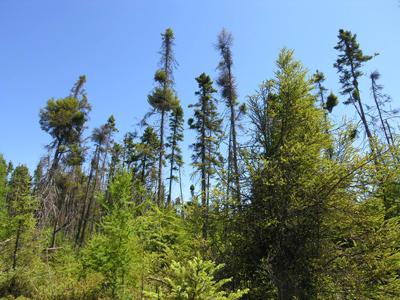
Witches' brooms on black spruce caused by Arceuthobium pusillum.
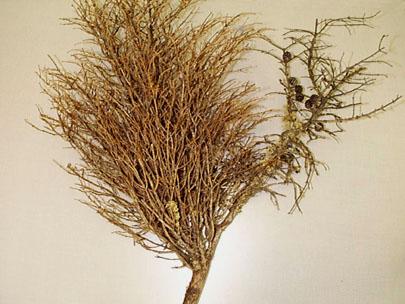
Witches broom on black spruce caused by Arceuthobium pusillum that was in the lab - without needles.
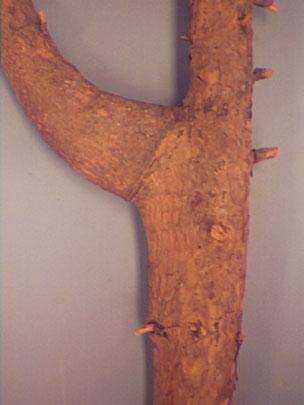
Black spruce showing loss of apical dominance and enlarged side branch that was infected with dwarf mistletoe.
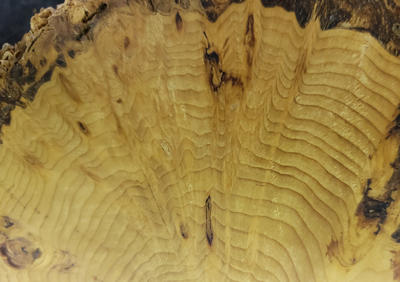
Cross section of a tree with dwarf mistletoe infection. Sinkers of the mistletoe follow the ray parenchyma cells into the wood to absorb nutrients.
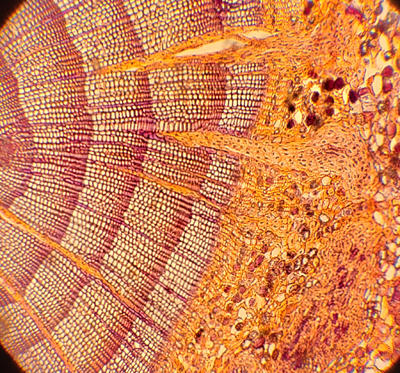
Cortical strands and sinkers (yellow cells) of dwarf mistletoe in cross section of conifer branch as seen under the microscope.
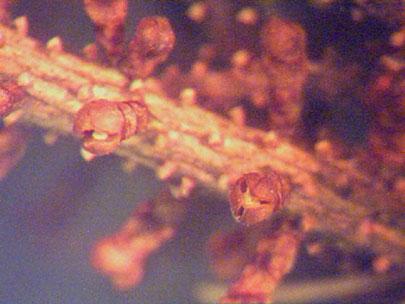
Male shoots of Arceuthobium pusillum that are just starting to open. The 3 segments open to release pollen in April / May in Minnesota.
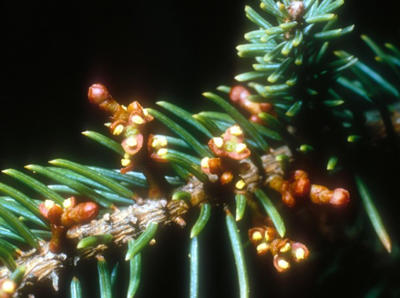
View of male shoots that are open showing the 3 segments with pollen.
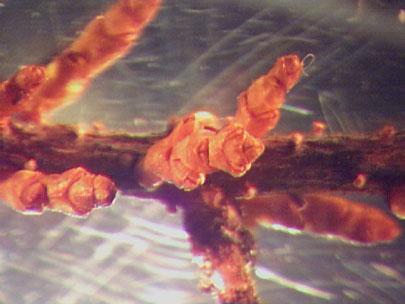
Female shoots of Arceuthobium pusillum. Pollination occurs in spring followed by seed production in the fall.
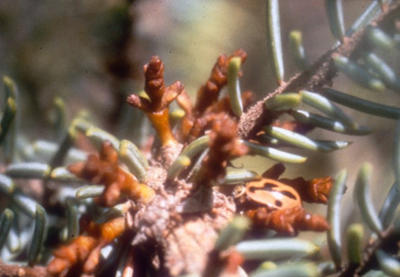
Female shoots are pollinated by insects in the spring.
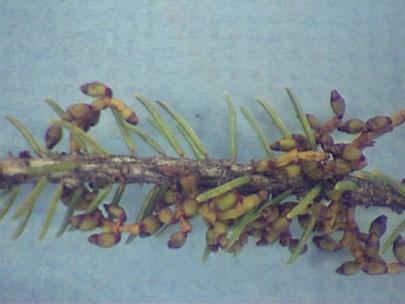
Seeds, produced in September in Minnesota, on Arceuthobium pusillum.
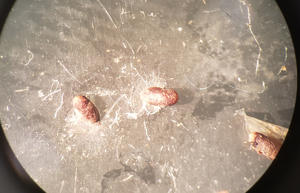
Expelled seeds of dwarf mistletoe. Seeds have a sticky mucilage layer called viscin on them (white dried material around seeds) that swells when wet.
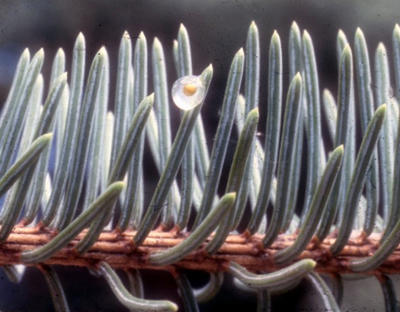
When wet, the viscin layer swells up and slides down the needle where it will stick to the branch. In the spring, the seed germinates producing a radicle and infects the tree.
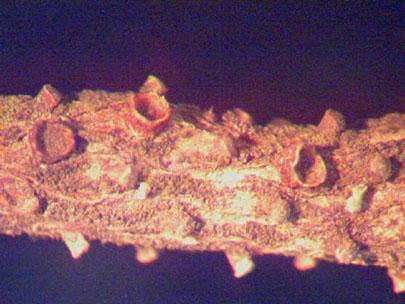
Basal cups of Arceuthobium pusillum on spruce. When the shoots fall off the branch a segment of the dwarf mistletoe shoot remains.
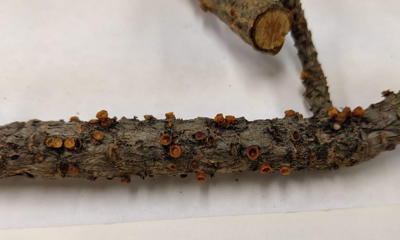
Basal cups on ponderosa pine stem infected by Arceuthobium vaginatum.
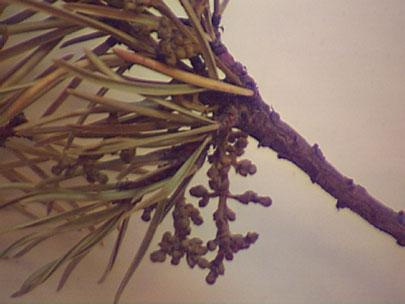
Dwarf mistletoe, Arceuthobium americanum, on Jack pine from Manitoba, Canada. This dwarf mistletoe is a threat to jack pine in Minnesota. Birds could vector long distance dispersal. Be on the look out for this - it could already be here.
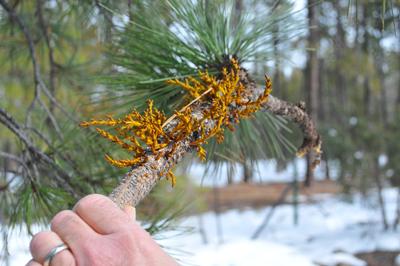
Dwarf mistletoe on Ponderosa pine growing in northern Arizona.